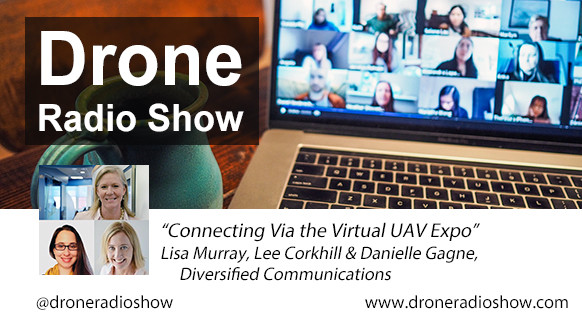The drone industry is very familiar with disruptive and new technology as well as the challenges of obtaining buy-in for these products and services. We have seen what happens when products claiming to have artificial intelligence or fully autonomous capabilities don’t quite live up to expectations. One bad experience can turn people off for a long time, or even for good, which ultimately hurts the industry. A lot of these issues come down to a lack of standards, which can lead to unmet expectations—what meets the criteria of AI or autonomous to be worthy of the name? This has been the struggle since the beginning of the industry and continues to be something we contend with.
The same thing is happening for the virtual event industry.
For anyone who has attended the myriad of virtual events, webinars, town halls, and fireside chats offered since the pandemic hit, it has probably already become clear that not all digital events are created equally. Depending on your expectations and how you defined the term “virtual event,” this has probably already started to influence your thoughts about it, for better or worse. Yet, with mass gatherings still globally restricted, virtual events are where it is at to make connections, get leads, network, and become informed about the latest news, technology, and ideas in the industry. Yet, without knowing what to expect, how do you decide where to spend your time and money?
Just like any new technology, this all comes down to establishing standards and expectations. What should a virtual event be and how can it provide value? This is exactly what Commercial UAV Expo Americas and Commercial UAV Expo Europe is working to define for the commercial drone industry.
In a recent podcast on Randy Goers’ Drone Radio Show, Lisa Murray, Lee Corkhill, Marketing Director of Commercial UAV Expo Americas and Commercial UAV Expo Europe, and Danielle Gagne, Editorial Analyst for Commercial UAV News, talked about the elements that they believe are key to making a successful virtual show.
“We started really becoming students of virtual platforms,” stated Murray during the podcast. “And we've come up to speed really quickly on what that looks like, and how to do a good one versus a bad one. We've all attended many dozens of virtual events over the last few months. I've walked away really happy with lots of contacts, and I’ve been blown away by some amazing content. But I've also walked away from others with a huge headache because things were glitchy and it wasn't really working. You can't just take the presentations you're going to do live and turn them into virtual. You have to really change up the format.”
Lisa and Lee went on to describe the many ways that they plan to change the format to highlight the best features of the new virtual platform, including introducing a new AI-assisted match making tool to help attendees, exhibitors and businesses intelligently find the right connections; digital power hours for exhibitors to man virtual booths and provide live presentations; an interactive conference schedule filled with creative networking breaks and opportunities to chat and ask questions; and more.
“We don’t want to get too excited about what the virtual platform can do, because we are in the business of live events, right?” began Murray. “But it is kind of exciting how far some of these tools have come, especially on the AI side. For example, if a virtual attendee comes to my virtual booth, I can reach back out to them. You have full visibility of the entire attendee list, which is something you don’t get at a live event.”
“I think when we all go to live events, especially for the introverts among us, it’s hard to connect with other people,” added Corkhill. “But this tool’s algorithm will propose who I might want to meet based on the industry I work in and the product and services that I’m interested in. And as more people interact, and as I interact with other people, that algorithm serves up more and better connections—it is very sophisticated. So, I think it will potentially deliver people many more connections.”
Even with all of these changes, the core elements that have made Commercial UAV events successful in the past will stay the same. It will still provide relevant, high-quality content, including a keynote by FAA Administrator, Steve Dixon, as well as foster meaningful and important connections and opportunities to network, which is something the industry is in need of right now.
The number of people from the industry that Commercial UAV Expo could potentially bring together is significant. Without the cost of travel and accommodations, and a lowered price for virtual attendance, this year’s event will enable many more people—some who may have never had the ability to come before—to attend, meaning that many more opportunities to make the right connection on a global scale.
“50% of our subscribers to UAV News are global,” pointed out Murray. “So, it gives all kinds of people an opportunity from wherever they are in the world to attend. And every session will be recorded and posted, so you can watch it on demand if you can’t watch it in real time—this really opens the audience up. Most virtual events are seeing two to three times the participation of a live event.”
To find out more about what we had to say about the upcoming virtual event, check out the full podcast below or send us an inquiry to receive more 2020 details.
















Comments